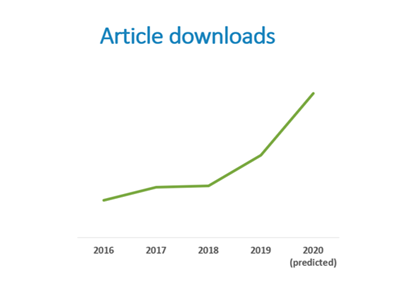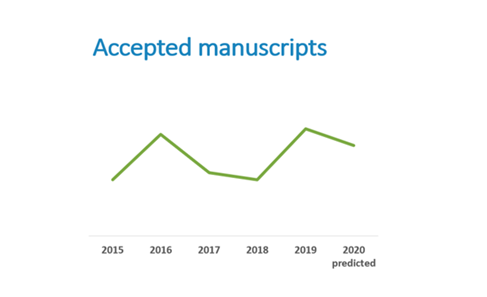flipping-from-subscription-to-open-access-a-case-study
January 15, 2021
We often hear from our society partners that they want to learn more from their peers when it comes to embracing open research within their organizations. At a recent virtual Seminar for society publishers, we invited Johan Nilsson of the Nordic Society Oikos, one of the leading ecology societies in the world, to get Oikos’ perspective. Johan, Associate Director in Oikos’ Editorial Office, told the story of how they flipped one of their most prominent journals from a subscription model to open access (OA).
Why open access?
Oikos had been thinking about transitioning a journal to OA for quite a while for two main reasons: open research is very well aligned with the society’s mission, and they feel that the future of subscription income is no longer very certain. Out of the four journals that Oikos publishes, they decided to flip Ecography. Ecography was a great candidate since it is a high-profile journal and very well cited. It also has a very strong author base in Europe and North America, where open access is more common. But maybe the most important factor for the flip was that, for being such a high impact journal, Ecography had relatively low subscription revenue.
After discussing the plans with the Oikos editorial board, they told Johan they’d prefer to wait to decide given uncertainty about what was happening with OA and Plan S in Europe. “A decision like this is nothing to take lightly. I mean, it’s no way back. Once you flip, you are open access, you can’t just try and say let’s go back,” Johan told our audience.
There were also concerns that Article Publication Charges (APCs) which might discourage some authors from publishing in the journal. Ultimately though, in May of 2019, the board of the society made a decision to flip Ecography to open access.
Decision to Flip
The first open access issue of Ecography published in January 2020 with an APC of $2,200. Oikos also published an open letter from the society board explaining the reason for the flip and created a detailed communication plan to address questions and concerns. “As a society, I think it’s extremely important that we are as transparent as possible about the decisions we are making. As long as we can explain why we’re doing it, I think the community is willing to listen.” The flip received mostly positive reactions from the community. Even better, the team had planned for a 20% decrease in 2020 submissions following the transition to OA, but submissions ended up being down only a few percentage points from the previous years.
Impact on the Journal
Submissions actually increased greatly from some places, like China, and decreased in some other countries including Brazil, Spain and Sweden. “It’s not that easy to see a real clear pattern. Yes, China did increase massively but China has increased in all our journals. We see an increase in submissions with Canada, Netherlands, Germany, countries that are pro-open access, so it makes sense. But on the other hand, we have Sweden as a decreasing country, and we have a deal with Sweden, so they don’t even have to pay.”
Downloads skyrocketed, and revenue also increased in just one year. The effect on the number of accepted manuscripts was very small, and according to Johan, most of the “lost” manuscripts would not have been published anyway.


Is Open Access Right for Your Journal?
For Ecography, the decision to go open access resulted in handful of negative reactions from the community, small impacts on submissions (in both directions), increased revenue and an increase in downloads. The story of Ecography was a success, but it’s important to remember the factors that make a journal a good candidate for an open access transition: Support for OA from your community, high-profile and high citations, and a strong author base who are able to support the open model. Talk to your Wiley Journal Publishing Manager if you’re interested in learning more about a transition to open access.


